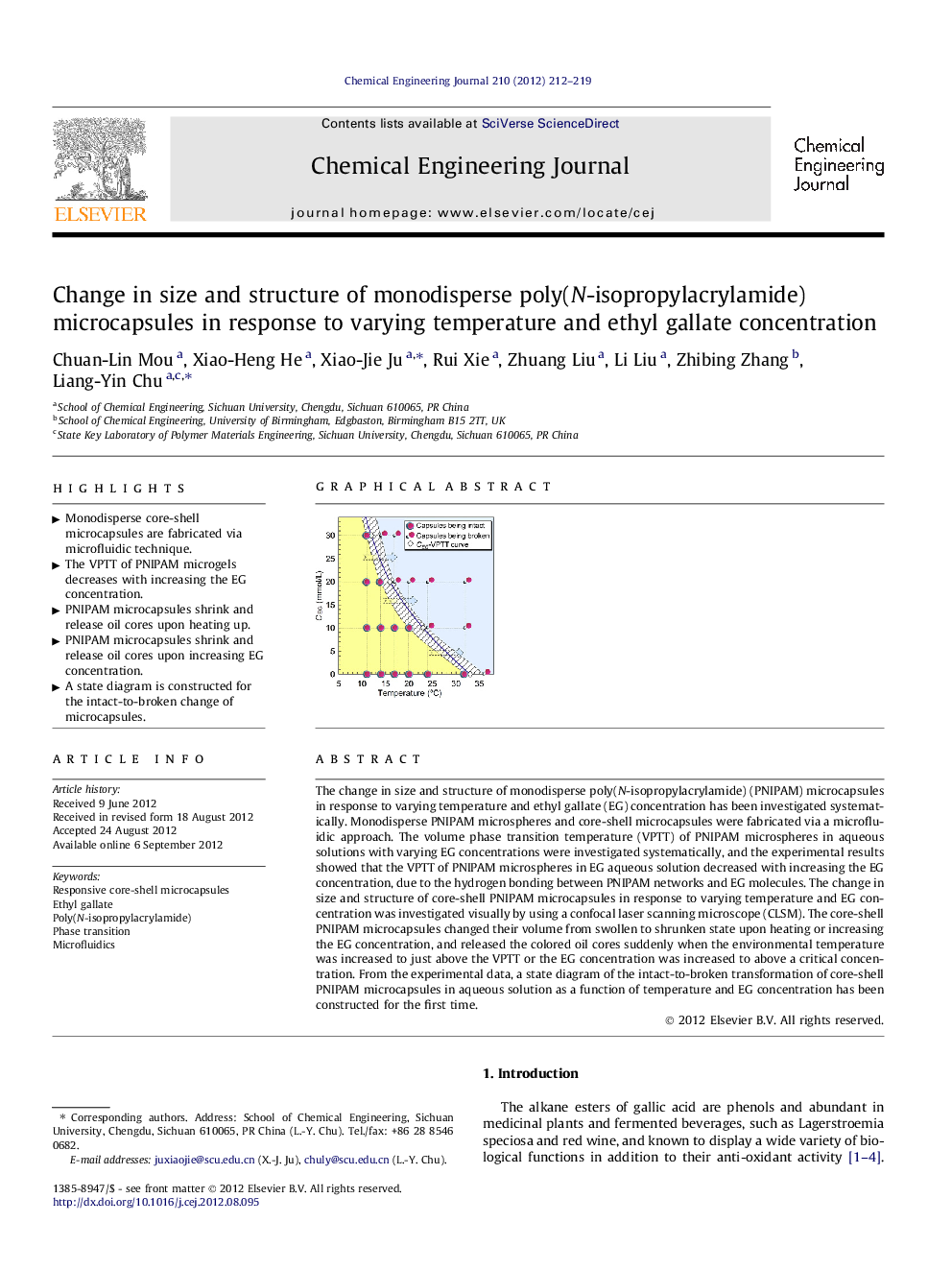| کد مقاله | کد نشریه | سال انتشار | مقاله انگلیسی | نسخه تمام متن |
|---|---|---|---|---|
| 149381 | 456431 | 2012 | 8 صفحه PDF | دانلود رایگان |

The change in size and structure of monodisperse poly(N-isopropylacrylamide) (PNIPAM) microcapsules in response to varying temperature and ethyl gallate (EG) concentration has been investigated systematically. Monodisperse PNIPAM microspheres and core-shell microcapsules were fabricated via a microfluidic approach. The volume phase transition temperature (VPTT) of PNIPAM microspheres in aqueous solutions with varying EG concentrations were investigated systematically, and the experimental results showed that the VPTT of PNIPAM microspheres in EG aqueous solution decreased with increasing the EG concentration, due to the hydrogen bonding between PNIPAM networks and EG molecules. The change in size and structure of core-shell PNIPAM microcapsules in response to varying temperature and EG concentration was investigated visually by using a confocal laser scanning microscope (CLSM). The core-shell PNIPAM microcapsules changed their volume from swollen to shrunken state upon heating or increasing the EG concentration, and released the colored oil cores suddenly when the environmental temperature was increased to just above the VPTT or the EG concentration was increased to above a critical concentration. From the experimental data, a state diagram of the intact-to-broken transformation of core-shell PNIPAM microcapsules in aqueous solution as a function of temperature and EG concentration has been constructed for the first time.
Figure optionsDownload as PowerPoint slideHighlights
► Monodisperse core-shell microcapsules are fabricated via microfluidic technique.
► The VPTT of PNIPAM microgels decreases with increasing the EG concentration.
► PNIPAM microcapsules shrink and release oil cores upon heating up.
► PNIPAM microcapsules shrink and release oil cores upon increasing EG concentration.
► A state diagram is constructed for the intact-to-broken change of microcapsules.
Journal: Chemical Engineering Journal - Volume 210, 1 November 2012, Pages 212–219